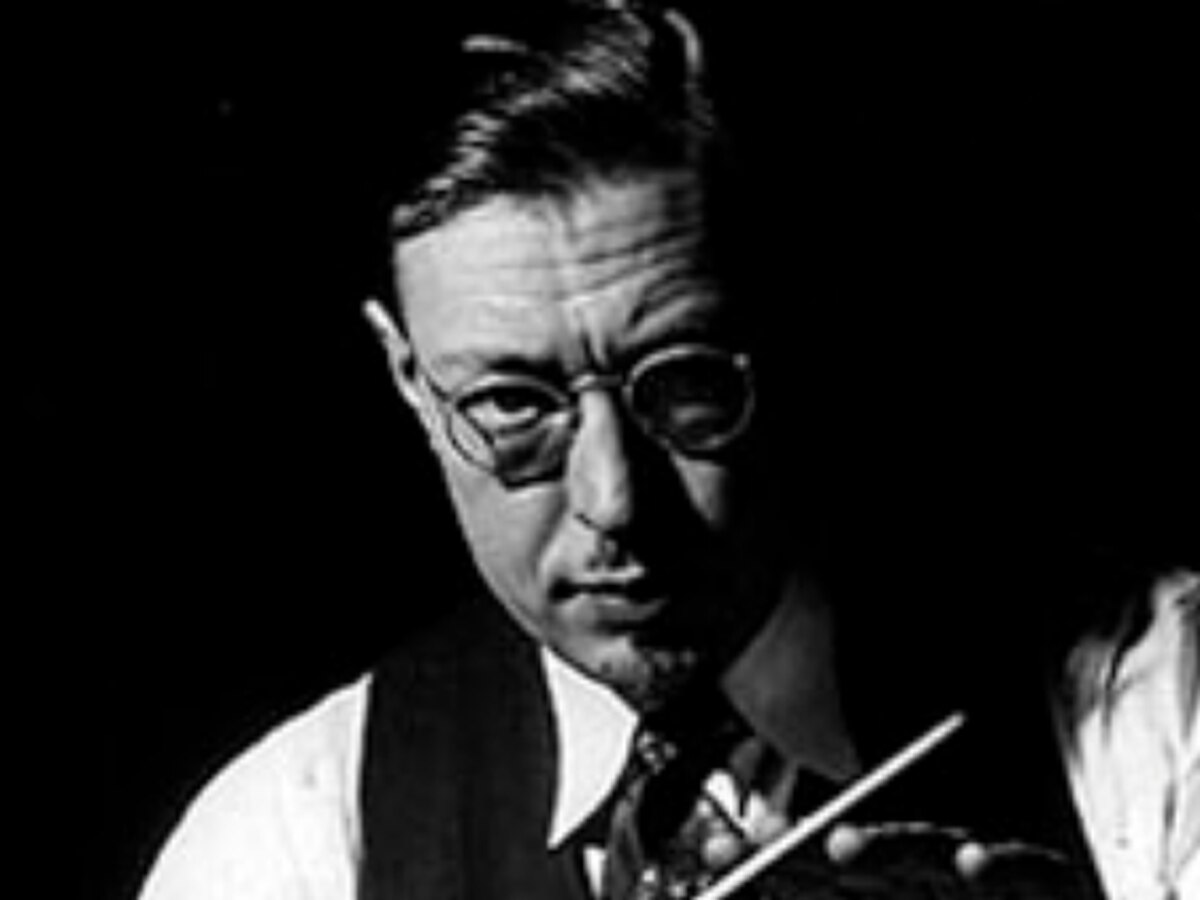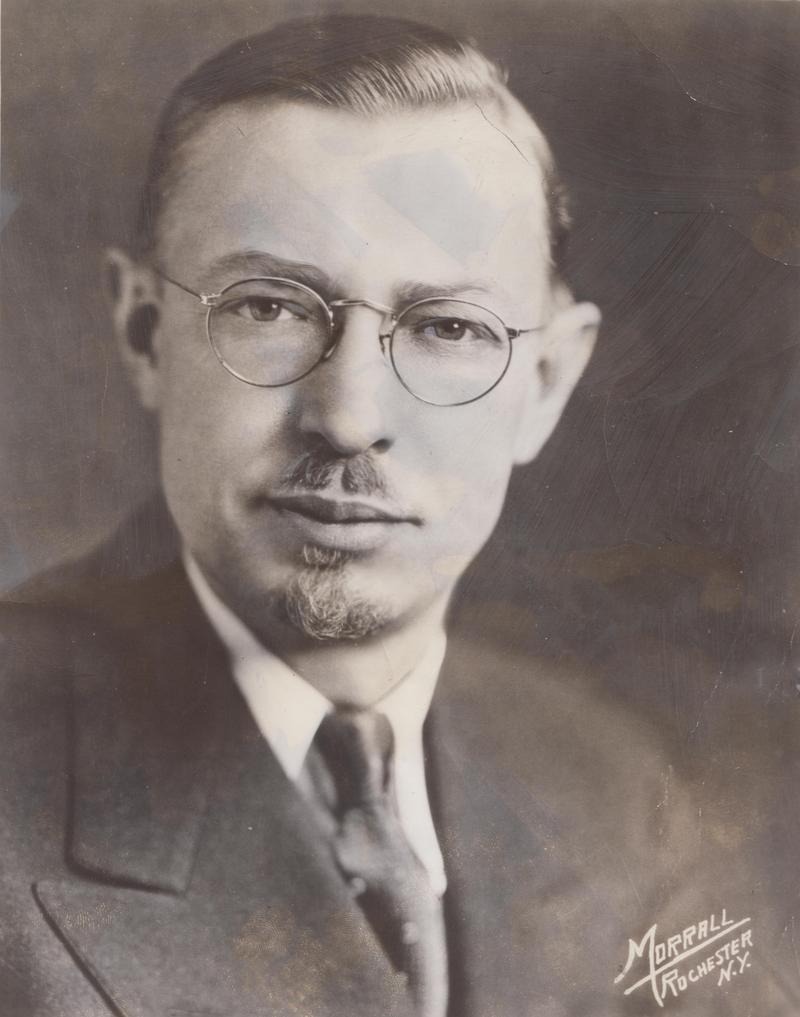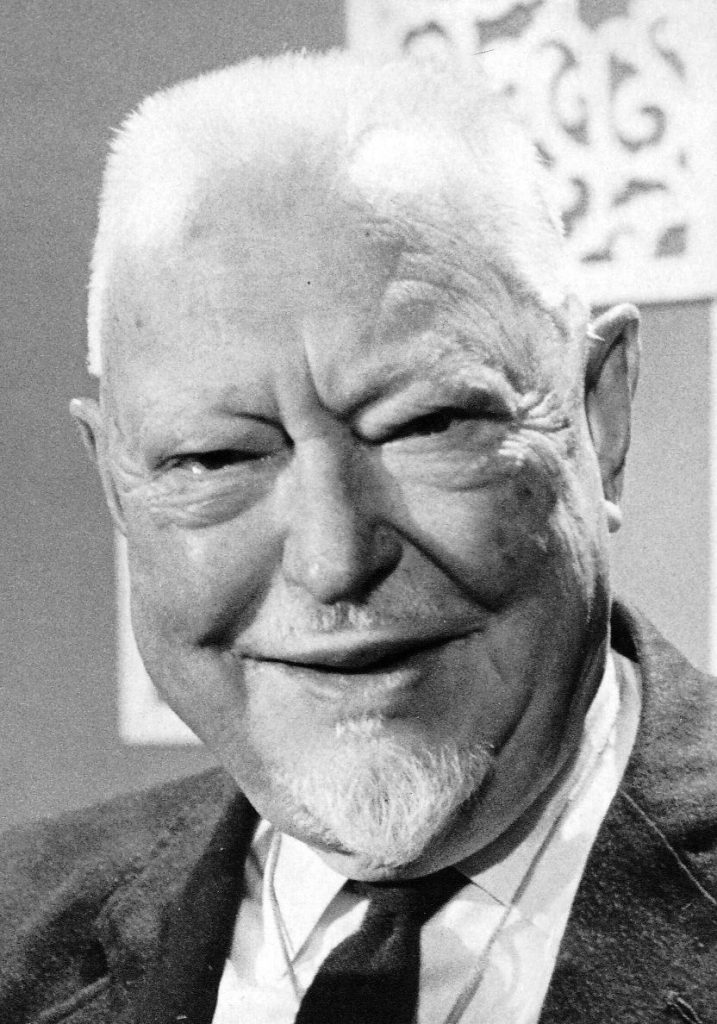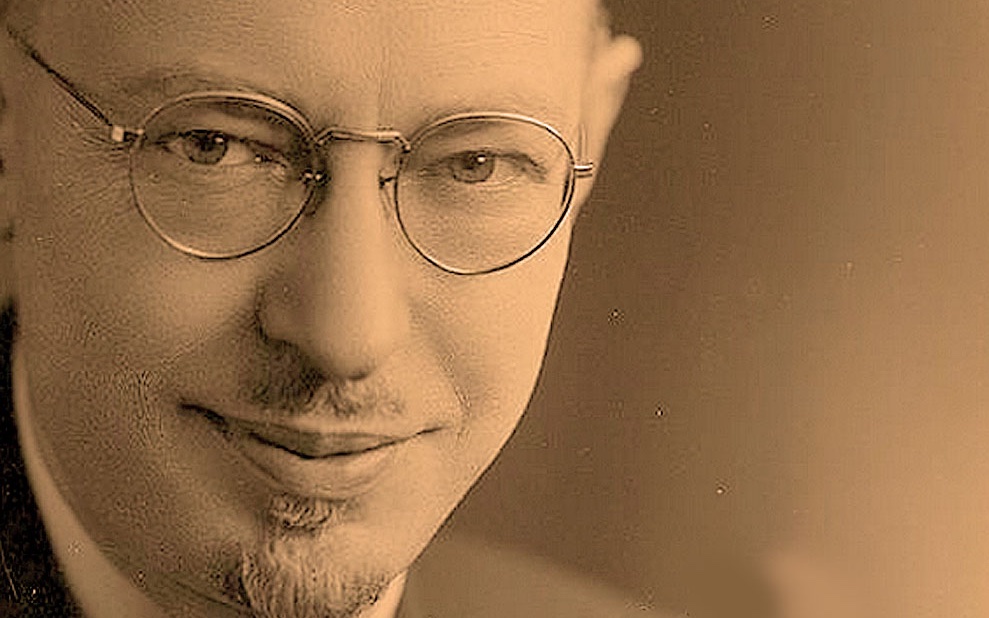



Hanson (October 28, 1896 – February 26, 1981) was an Americancomposer, conductor, educator, music theorist, and champion of American classical music. As director for 40 years of the Eastman School of Music, he built a high-quality school and provided opportunities for commissioning and performing American music. In 1944, he won a Pulitzer Prize for his Symphony No. 4, and received numerous other awards including the George Foster Peabody Award for Outstanding Entertainment in Music in 1946.
Early life and education
Hanson was born in Wahoo, Nebraska, to Swedish immigrant parents, Hans and Hilma (née Eckstrom) Hanson. In his youth he studied music with his mother. Later, he studied at Luther College in Wahoo, receiving a diploma in 1911, then at the Institute of Musical Art, the forerunner of the Juilliard School, in New York City, where he studied with the composer and music theorist Percy Goetschius in 1914.
Afterward he attended Northwestern University, where he studied composition with church music expert Peter C. Lutkin and Arne Oldberg. Hanson also studied piano, cello, and trombone. He earned his BA degree in music from Northwestern in 1916, and began his teaching career as a teacher’s assistant.
Career
In 1916, Hanson was hired for his first full-time position as a music theory and composition teacher at the College of the Pacific in California. Only three years later, the college appointed him Dean of the Conservatory of Fine Arts in 1919. In 1920, Hanson composed The California Forest Play, his earliest work to receive national attention. Hanson also wrote a number of orchestral and chamber works during his years in California, including Concerto da Camera, Symphonic Legend, Symphonic Rhapsody, various solo piano works, such as Two Yuletide Pieces, and the Scandinavian Suite, which celebrated his Lutheran and Scandinavian heritage.
In 1921 Hanson was the first winner of the Prix de Rome in Music (the American Academy‘s Rome Prize), awarded for both The California Forest Play and his symphonic poem Before the Dawn. Thanks to the award, Hanson lived in Italy for three years. During his time in Italy, Hanson wrote a Quartet in One Movement, Lux Aeterna, The Lament for Beowulf (orchestration Bernhard Kaun), and his Symphony No. 1, “Nordic”, the premiere of which he conducted with the Augusteo Orchestra on May 30, 1923. The three years Hanson spent on his Fellowship at the American Academy were, he considered, the formative years of his life, as he was free to compose, conduct without the distraction of teaching—he could devote himself solely to his art. (It has been incorrectly stated that Hanson studied composition and/or orchestration with Ottorino Respighi, who in turn had studied orchestration with Nikolay Rimsky-Korsakov. Hanson’s unpublished autobiography refutes the statement, attributed to Ruth Watanabe, that he had studied with Respighi.)While Hanson may not have pursued formal studies with Respighi while in Rome, he apparently did receive advice from him. In addition, Respighi invited Hanson to attend rehearsals and performances of his orchestral concerts. As a result of these interactions, Hanson credited Respighi as a significant influence on his use of orchestral textures and instrumentation. In addition, he cited the works of several other composers as being influential while studying in Rome including: Nicolai Rimsky-Korsakov, Gustav Holst, Giovanni Palestrina and Richard Wagner.
Upon returning from Rome, Hanson’s conducting career expanded. He made his premiere conducting the New York Symphony Orchestra in his tone poem North and West. In Rochester, New York in 1924, he conducted his Symphony No. 1. This performance brought him to the attention of George Eastman.[13]Eastman School of Music – University of Rochester – general view
In 1924, Eastman chose Hanson to be director of the Eastman School of Music. Eastman, inventor of the Kodak camera and roll film, was also a major philanthropist, and used some of his great wealth to endow the Eastman School of Music at the University of Rochester.
Hanson held the position of director for forty years, during which he created one of the most prestigious music schools in America. He accomplished this by improving the curriculum, bringing in better teachers, and refining the school’s orchestras. Also, he balanced the school’s faculty between American and European teachers, even when this meant passing up composer Béla Bartók. Hanson offered a position to Bartók teaching composition at Eastman, but Bartók declined as he did not believe that one could teach composition. Instead, Bartók wanted to teach piano at the Eastman School, but Hanson already had a full staff of piano instructors.
In 1925, Hanson established the American Composers Orchestral Concerts. He followed that in 1931 by establishing the annual Festivals of American Music. These week long concerts were free to the public and featured established works by American composers as well as premiers of new compositions. They included performances of: orchestral works, chamber music, band and wind ensemble music, vocal and chamber music, opera and ballet. The festival concerts were eagerly anticipated by audiences in Rochester until 1971 and were also broadcast regularly over national radio networks from the Eastman Theater. Critics have often observed that over the course of four decades “more music has been played at these concerts than in all the rest of the United States put together.”
Hanson’s interest in educating the general public through innovative means became apparent as early as 1938. At this time he engaged the talents of student ensembles at the Eastman School to present Milestones in the History of Music on the radio. This weekly series of programs presented a sweeping survey of the history of Western music which was broadcast locally in Rochester, New York on WHAM and nationally on the NBC Red Network. In recognition of these efforts, the Peabody Award for outstanding service to music was awarded to Hanson, the Eastman School and WHAM in 1946. Hanson also engaged his student ensembles to present a similar series for the CBS radio network which he entitled Milestones in American Music. This series presented orchestral, choral and chamber music composed by eighty two American composers from the mid 19th century to modern times. As Hanson himself indicated this was “the first attempt at a rather complete presentation of the American picture in music.”
Later in 1939, he founded the Eastman-Rochester Orchestra, which consisted of first chair players from the Rochester Philharmonic Orchestra, faculty members from the Eastman School of Music and selected students from the Eastman School. For thirty years from 1939 to 1969 Hanson made over one hundred recordings for RCA Victor, Mercury Records and Columbia Records with the Eastman-Rochester Orchestra, not only of his own works, but also those of other American composers such as: Charles Ives, Wayne Barlow, John Alden Carpenter, Charles Tomlinson Griffes, Alan Hovhaness, Homer Keller, John Knowles Paine, Burrill Phillips, Walter Piston, Bernard Rogers, Roger Sessions and William Grant Still. Hanson estimated that more than 2000 works by over 500 American composers were premiered during his tenure at the Eastman School.
To celebrate the 50th anniversary of the Boston Symphony Orchestra, Serge Koussevitzky commissioned Hanson’s Symphony No. 2, the “Romantic”, and premiered it on November 28, 1930. This work was to become Hanson’s best known. One of its themes is performed at the conclusion of all concerts at the Interlochen Center for the Arts. Now known as the “Interlochen Theme”, it is conducted by a student concertmaster after the featured conductor has left the stage. Traditionally, no applause follows its performance. It is also widely known for its use in the final scene and end credits of the 1979 Ridley Scott film Alien.
In some ways Hanson’s opera Merry Mount (1934) may be considered the first fully American opera. It was written by an American composer and an American librettist on an American story, and was premiered with a mostly American cast at the Metropolitan Opera in New York in 1934. The Opera received fifty curtain calls at its Met premiere, a record that still stands. In 1935, he wrote “Three Songs from Drum Taps”, based on the poem by Walt Whitman.
Frederick Fennell, conductor of the Eastman Wind Ensemble, described Hanson’s first band composition, the 1954 Chorale and Alleluia as “the most awaited piece of music to be written for the wind band in my twenty years as a conductor in this field”. Chorale and Alleluia is still a required competition piece for high school bands in the New York State School Music Association’s repertoire list.
During the 1950s and 1960s Howard Hanson continued to adapt innovative techniques in an effort to educate as large an audience as possible, even as revolutionary changes in mass media emerged in America. For example, he collaborated with the Ford Foundation during this period in order to produce a series of television films on composition. He also served as a member of the Music Advisory Panel of the American National Theatre and Academy along with Virgil Thomson, William Schuman and Milton Katims.This panel consisted of leading composers and academics who evaluated candidates for the Department of State’s Cultural Presentations program Musicians who were accepted into this program represented America’s cultural diplomacy initiatives in concert venues throughout the world during the Cold War. Later in the 1960s, he also hosted and conducted the Los Angeles Philharmonic in several series of young peoples concerts for school children in the Los Angeles area. In 1960, Hanson also published a book Harmonic Materials of Modern Music (1960). Though not an example of integral music theory, it contained fruitful ideas and analytic algorithms which were incorporated in later theories such as set theory of Allen Forte. The idea of ‘modal modulation’ (Hanson’s term) echoed in the Yuri Kholopov’s ‘variable mode’ doctrine.[citation needed]
Following his retirement as Director of the Eastman School of Music in 1964, Hanson was appointed as the first director of the newly established Institute for American Music at the University of Rochester. In this new role, Hanson continued his efforts to foster a widespread understanding and appreciation of American music through performances, publications and recordings. Operating funds for the institute were largely derived from royalties generated from compositions and recordings which were executed by Hanson during his tenure at the Eastman School. Following his death in 1981, Hanson’s wife Peggy assumed his responsibilities at the institute until her passing in 1996. It has been observed that nearly every American composer since World War I is indebted in some degree to Howard Hanson for his efforts to educate the public and future generations of professional musicians about American music.
Hanson was elected as a member of the National Institute of Arts and Letters in 1935, President of the Music Teachers’ National Association from 1929–30, and President of the National Association of Schools of Music from 1935–39. From 1946–62, he was active in United Nations Educational, Scientific and Cultural Organization (UNESCO). UNESCO commissioned Hanson’s Pastorale for Oboe and Piano, and Pastorale for Oboe, Strings, and Harp, for the 1949 Paris conference of the world body.
During the course of his career Hanson also served as a guest conductor for several leading orchestras including: the New York Philharmonic, the Boston Symphony Orchestra, and the NBC Symphony Orchestra. He was also a frequent conductor of the Rochester Symphony Orchestra at the Eastman Theater in Rochester, New York. In addition, he was the founder of the Eastman Philharmonia orchestra at the Eastman School of Music. This ensemble consisted of elite upperclassmen from the Eastman School of Music and was noted for concertizing throughout the country. Under Hanson’s leadership, it was selected to participate in the United States Department of State’s international cultural exchange program during the 1961–1962 season. Hanson took the Eastman Philharmonia on a European tour which passed through Paris, Cairo, Moscow, and Vienna, among other cities. The tour showcased the growth of serious American music for Europe and the Middle East. Hanson’s performances with the orchestra received critical acclaim in thirty four cities and sixteen countries throughout Europe, the Middle East and Russia.
Marriage
Hanson met Margaret Elizabeth Nelson at her parents’ summer home on Lake Chautauqua at the Chautauqua Institution in New York. Hanson dedicated the Serenade for Flute, Harp, and Strings, to her; the piece was his musical marriage proposal, as he could not find the spoken words to propose to her. They married on July 24, 1946 in the same house where they had first met. https://en.wikipedia.org/wiki/Howard_Hanson
Movements: 1. Birds of the Sea (0:00) 2. Summer Seascapes (7:31) 3. God in Nature (16:42)
